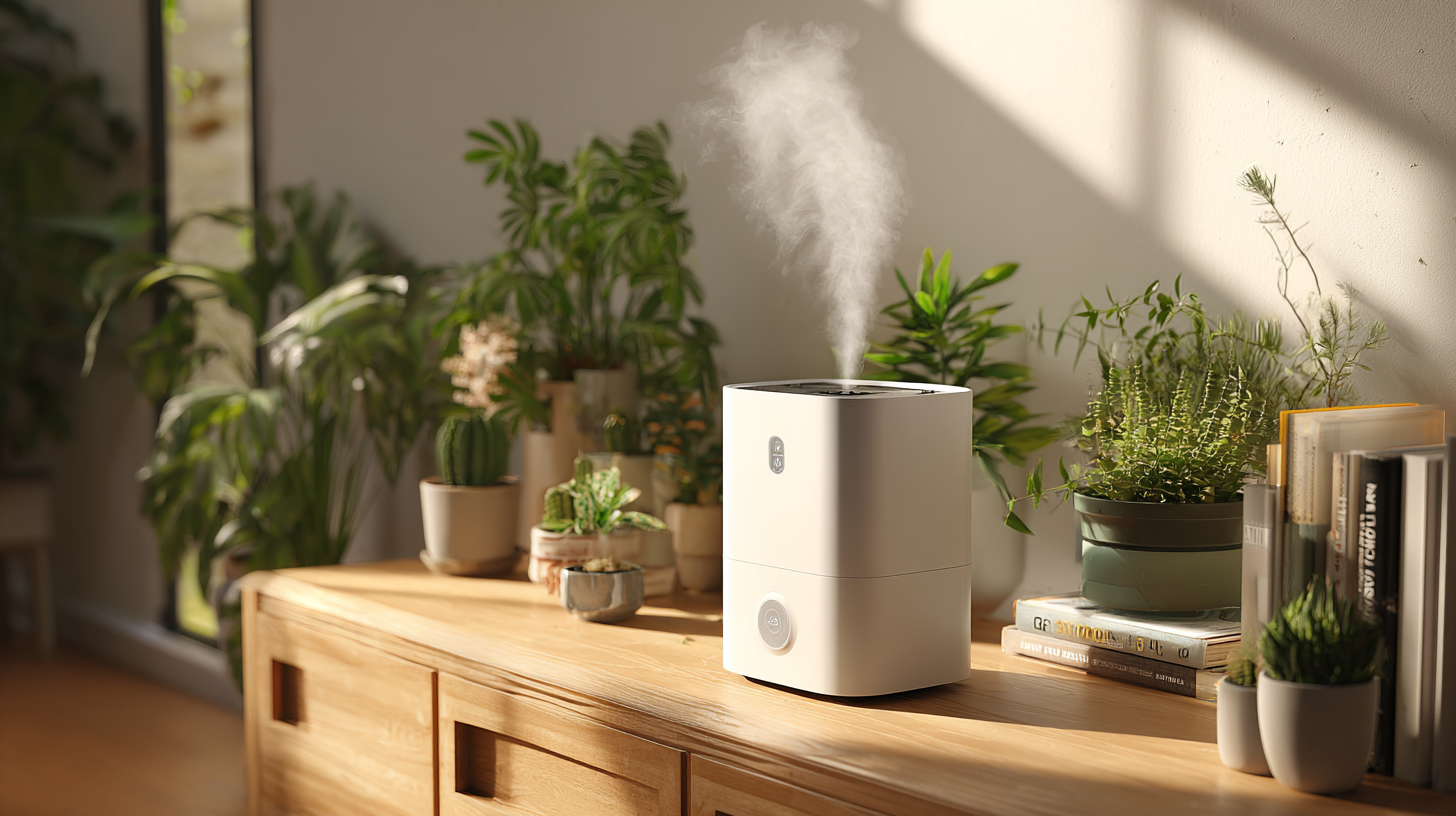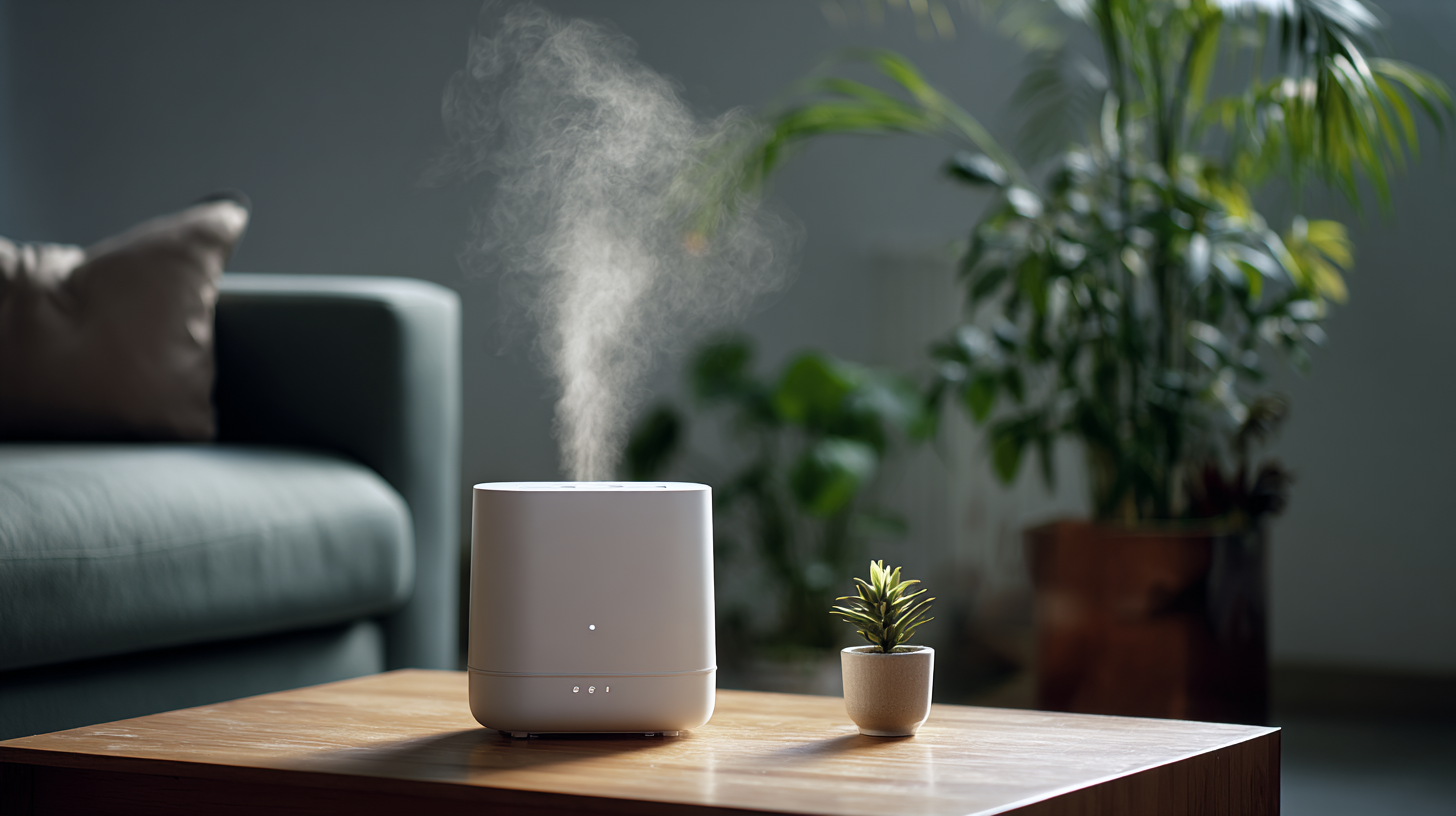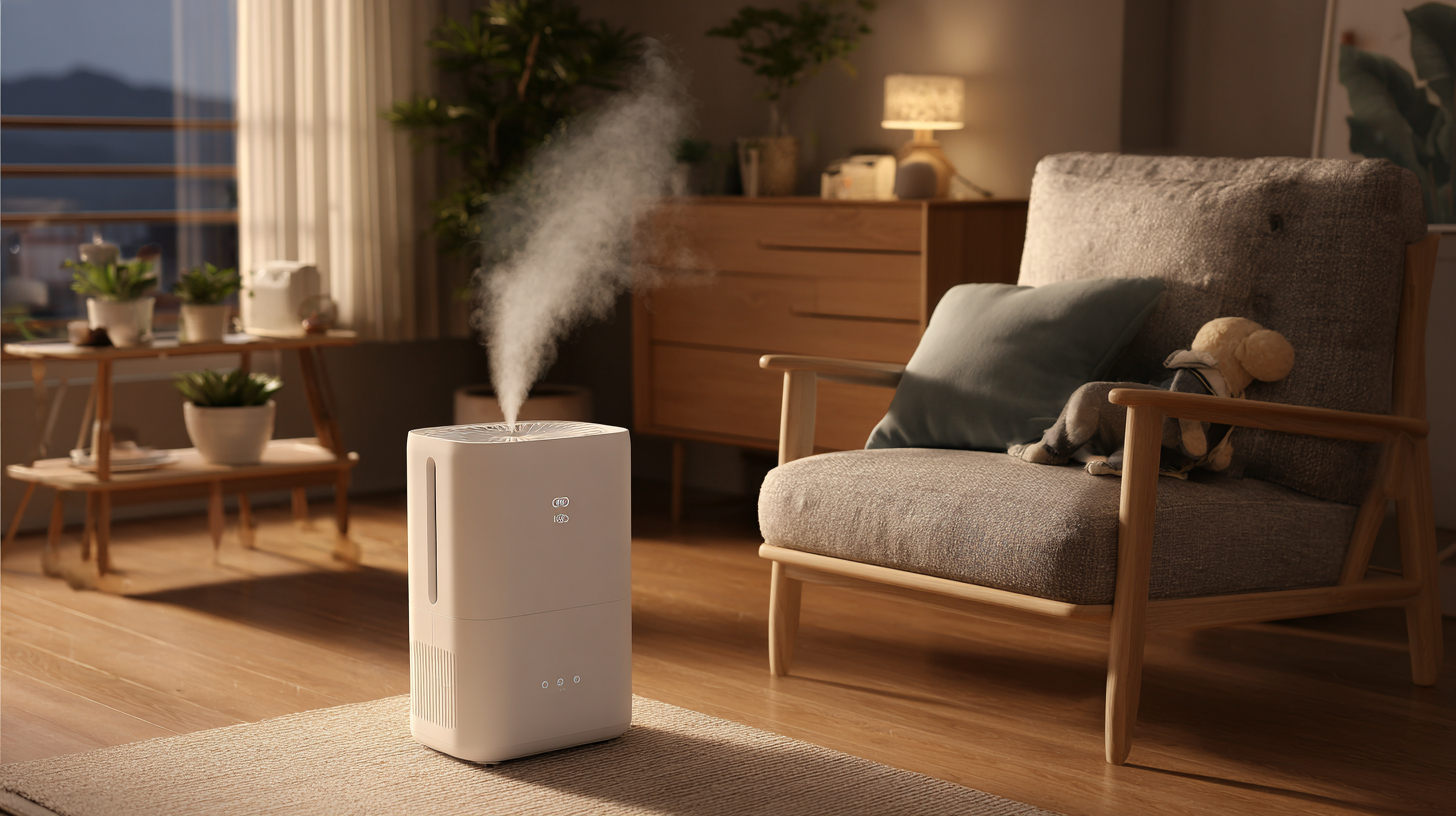Maintaining optimal humidity levels in our homes is crucial for both comfort and health, especially considering that the World Health Organization recommends indoor humidity levels between 30% and 60%. A significant percentage of homeowners struggle to achieve these levels, leading to issues such as dry skin, respiratory problems, and increased susceptibility to allergies. A recent study by the National Institute of Health highlighted that installing a home humidifier can significantly improve indoor air quality and overall well-being. With the growing awareness of these benefits, the demand for efficient and high-quality humidifiers has surged.

Furthermore, understanding the advantages of after-sales service and the significance of repair costs can influence the decision to install home humidifiers. In this blog, we will explore the best installable humidifiers available, emphasizing their long-term benefits and the future trends in home humidity solutions that cater to an increasing focus on health and comfort.
Maintaining optimal home humidity levels is crucial for both comfort and health. According to the American Society of Heating, Refrigerating and Air-Conditioning Engineers (ASHRAE), indoor humidity should ideally be kept between 30% and 50%. Proper humidity levels can help reduce the risk of respiratory issues, allergies, and even structural damage to your home. Dry air can lead to dry skin, irritated sinuses, and increased susceptibility to illnesses, while excessive humidity can promote mold growth and dust mites.
To achieve optimal humidity, consider installing a high-quality humidifier. Look for models with a built-in hygrometer that can monitor and adjust humidity levels automatically. One tip is to choose a humidifier with a large water reservoir, which will require less frequent refilling, ensuring consistent moisture throughout your home.
Additionally, using a hygrometer can help you keep track of humidity levels. If you find that your indoor humidity frequently falls below the recommended range, consider running your humidifier during dry seasons or in particularly arid climates. Not only will this improve your living environment, but it will also help maintain the longevity of your home furnishings and appliances, including wooden furniture and electronics.
When it comes to maintaining optimal humidity levels in your home, choosing the right type of humidifier is crucial. There are several types of installable humidifiers that cater to different needs and spaces. First on the list is the whole-house humidifier. This type is integrated into your home’s heating and cooling system, providing consistent humidity levels throughout every room. Whole-house humidifiers are ideal for larger homes or those experiencing significant fluctuations in indoor humidity.
Another excellent option is the evaporative humidifier, which uses a fan to blow air through moistened pads, adding humidity naturally as the air circulates. These units often require regular maintenance but are energy efficient and work well in moderate climates. For smaller spaces or specific areas like bedrooms or offices, portable humidifiers can be installed easily. While they might not be as powerful as the whole-house systems, they offer flexibility and can be moved to different places as needed. By exploring these options, homeowners can effectively address their humidity issues and improve indoor air quality.
This bar chart illustrates the optimal humidity levels for home environments. The ideal humidity level is around 40-60% to ensure comfort and health. Low levels below 30% may lead to dry skin and respiratory issues, while levels above 70% can promote mold and dust mites.
When it comes to selecting the right humidifier for your home or office, understanding your specific needs is crucial. With the market for humidifiers set to reach $23.26 billion by 2025, it's clear that many consumers are prioritizing air quality. As indoor humidity levels drop during cooler months, particularly when heating systems are in use, a dependable humidifier can not only enhance comfort but also protect health. Key factors to consider when shopping for a humidifier include the size of the space, the type of humidity you prefer—whether warm or cool—and additional features such as filters or auto shut-off capabilities.
Moreover, recent trends show a surge in the popularity of unique and aesthetically pleasing humidifiers on platforms like TikTok, making them a desirable addition to modern office settings. As more individuals seek to create a pleasant work environment, these devices have transitioned from luxury items to essential office equipment.
With industrial dehumidifiers also gaining traction, especially within critical sectors such as electronics and pharmaceuticals, the demand for effective humidity control is only expected to grow, emphasizing the importance of choosing the right humidifier tailored to your needs.
 Choosing quality, made-in-China humidifiers offers numerous benefits that go beyond just essential moisture control. According to the National Institute of Health, maintaining an optimal indoor humidity level between 30-50% helps reduce airborne viruses and bacteria, thereby enhancing overall health and comfort. Made-in-China humidifiers are often designed using the latest technology, ensuring efficient and effective operation. They combine reliable performance with affordability, making them an excellent investment for homeowners seeking to improve their indoor air quality.
Choosing quality, made-in-China humidifiers offers numerous benefits that go beyond just essential moisture control. According to the National Institute of Health, maintaining an optimal indoor humidity level between 30-50% helps reduce airborne viruses and bacteria, thereby enhancing overall health and comfort. Made-in-China humidifiers are often designed using the latest technology, ensuring efficient and effective operation. They combine reliable performance with affordability, making them an excellent investment for homeowners seeking to improve their indoor air quality.
When selecting a humidifier, consider options with features such as built-in hygrometers and automatic shut-off functions. These features not only enhance usability but also ensure that humidity levels are kept in check without the risk of over-humidification, which can lead to mold growth and dust mites. Additionally, many manufacturers offer models that are energy-efficient, contributing to lower utility bills while maintaining a comfortable environment.
Tips: Regularly clean your humidifier as instructed to prevent the growth of mold and bacteria. Monitor humidity levels with a hygrometer to ensure they stay in the optimal range. Lastly, consider investing in a humidifier with a long warranty period to guarantee its durability and performance over time.
When it comes to maintaining optimal home humidity levels, installing a humidifier correctly is crucial. Proper installation not only ensures efficient operation but also extends the longevity of the unit. Start by choosing a suitable location for your humidifier, preferably in a central area of your home for even distribution of moisture. Make sure the unit is placed on a stable, elevated surface and away from walls and furniture to allow for adequate airflow.
Regular maintenance is essential to keep your humidifier performing at its best. One tip is to clean the water tank and base regularly, ideally every few days, to prevent mold and bacteria buildup. Use a gentle vinegar solution for descaling mineral deposits and always follow the manufacturer's instructions for deep cleaning. Also, remember to replace filters and wicks as needed, as these components can significantly affect your humidifier's efficiency and air quality. Keeping an eye on humidity levels with a hygrometer can help you adjust settings and ensure a comfortable environment.
